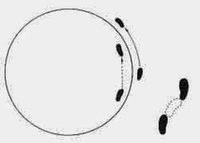Extinction of the Expert
How the knowledge economy is changing the innovation game.
By Denise Gershbein
The
age of the expert is over. Information is flowing at such an everyone,
everywhere, everything, all-the-time pace that participation in the
knowledge economy is no longer optional, or a value-add. It’s
compulsory. And it offers an identity crisis for those individuals and
companies who call themselves experts, leaders, innovators, and problem
solvers.
In the
knowledge economy, you can’t achieve expert or lead status just by
having a compelling idea, a creative design, or a body of experience to
call upon, no matter what field you work in. Unfettered access to
information means an expected participation in a larger number of domain
verticals. Expectations for the quality of the idea are higher.
But
while individual participation and production across domains increases,
the bandwidth of the individual to validate his or her ideas shrinks.
Your idea or topic will always have a germ somewhere else, whether you
know it or not. Audiences are smarter, more skeptical, and more
judgmental. Facts can be checked and disproved easily, and audiences can crowdsource a verdict quickly and summarily.
Innovation
is a neutral term: it simply means “new.” But new isn’t enough when the
crowd can do better. Today, the question of innovation and achieving it
through cross-disciplinary collaboration and knowledge sharing is well
beyond deep expertise or broad horizons. We’re beyond the lateral and
the longitudinal, beyond the specialist or the generalist. We’re also coming to understand that the crowdsourced collective isn’t the whole answer. To paraphrase Malcolm Gladwell: You can’t crowdsource Shakespeare.
Convergence
hasn’t delivered on its promise because it isn’t the solution: It’s
only one step within a future-forward knowledge framework. Innovation
is achieved after disciplines come together, when their organizing
principles, themes, and guiding premises overlay in transparency and
there is a resulting exponential accretion of knowledge and possibility.
The
awakening to the power of our collective intelligence can be seen in
the business media and the semantic gymnastics swirling around
convergence, divergence, design thinking, innovation, and other
catchwords. Convergence came on the scene when everyone figured out that
there were other domains and verticals that needed to be considered in
the practice of design; that there were other practices that could
inform your own, other specialties to benefit from, shoulders of giants
to be stood upon. Now, being “convergent” is like being multinational
but not global. You’re on the big stage, but you haven’t achieved the
statesmanship that comes with the full essence of understanding.
This awakening is likely a good thing, but it also means that the idea of a powerful collective intelligence is in its nascency.
People don’t quite get it yet. Everyone is straining for the holy grail
of innovation, but if everything is new, then change just becomes the
norm and everything becomes disposable instead of special. Nothing is
truly innovative in the finest meaning of the word.
Going
forward, convergence must not be about the objects of design but about
the process of creativity. Because of that it’s becoming harder to
imagine a holistic, expert stance for an individual. True expertise and
innovation increasingly depend on creativity and problem solving by
community, or what we might call a “society of design.”
Does this mean experts, creative directors, and gurus are going extinct? It
does if they try to hold on to the fading notion that they’re the
central repository of expert knowledge. The fact is, encyclopedic
knowledge is in the crowd, and specialized knowledge will rest with the
individual. The leaders and experts of tomorrow have to be either
polymaths (deep multi-domain experts), curators (those who collect or
collate different domains), polyglots (the overlay and meaning makers),
or all three.
Even
then, effective leadership won’t come simply by collecting numerous
disciplines under one roof. Nor will it come by buying a company for the
purpose of associating oneself with expertise. True leaders and
experts will have to support distributed knowledge networks by
attracting polymaths, polyglots, and curators into their workforce, and
by pursuing partnerships or collaborative consultancies externally. Leadership, expertise, and innovation will come from those who rise up to facilitate and speak the lingua franca of all domains.
http://designmind.frogdesign.com/articles/motion/extinction-of-the-expert.html
"An expert is someone who knows some of the worst mistakes which can be made in a very narrow field." --- Niels Bohr
Source: http://pathologyexpert.blogspot.com/2014/08/expert-mistakes.html





%2Bv2b.jpg)



